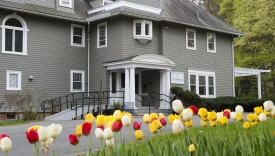Film & Media Studies 234 - Television Narratives
(Offered as ENGL 283 and FAMS 234.) What stories does television tell? And how does it tell them? This course will approach television’s narratives through a focus on both form and content. We will take into account issues of production, distribution, and exhibition, with attention both to historical developments and contemporary transformations to the medium. In this way, we will explore how shifts in programming, platforms, and viewing habits alter both televisual narration and consumption. By considering television’s specific form–whether commercial networks, cable TV, or subscription platforms like Netflix and Hulu–we will query how this specific media format enables or limits the ways it tells stories and what stories it tells. Each iteration of this course will focus on particular forms of narrative programming, through an emphasis on genre, format, historical eras, or cultural facets. Readings will include key critical works in Television Studies, essays on particular television series, and other works that situate television texts in a broader cultural framework and history. The goal of the course is to think through narrative form, representational systems, authorship, exhibition, and reception habits in order to define not just what television narrative is but also what it can be.
In spring 2021, “Television Narratives” will focus on policing race, as represented in US television series, with some forays also in documentary programming and music videos from the late 1980s, early 1990s, and our contemporary period. We will begin with episodic police and detective series of the late 1960s and 1970s, such as The Mod Squad, Tenafly, and Shaft, when the role of the black detective merged social consciousness and contemporary style, sometimes treading the line between criminality and the law. We will then turn to the hybrid episodic-serial format of Hill Street Blues, focusing on the representation of both African-American policing and criminality represented within the series. Our next case study, spanning the 1990s and early 2000s, will consider the emergence of the police procedural as a dominant televisual form, with an emphasis on the long-running Law and Order franchise. Our final case study will compose the latter half of the course, as we will look at mini series and limited season serials, including the docudrama When They See Us and the one-season series Seven Seconds. During this final unit, we will also integrate queries into YouTube, TikTok, and Instagram to consider how the narratives of such series are extended through intertextual connections with clips, interviews, and productions by both fans and artists.
Two sections of this course will be offered, each section limited to 25 students. Section 01: hyflex. Section 02: online only. Spring semester. Professor Hastie.


